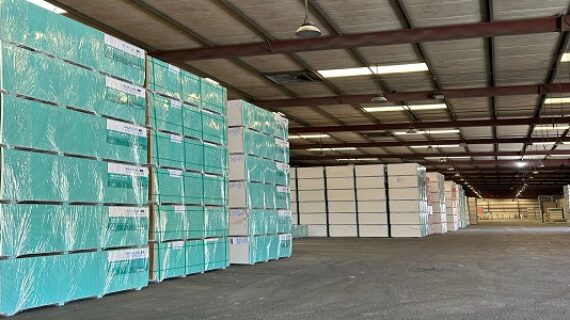The Architects Guide to Sustainable Building Practices
Our planet faces an unprecedented challenge – climate change and environmental degradation threaten the very foundation of our being. In this critical juncture, sustainable building practices have emerged as a hope, offering a path towards a more resilient and harmonious future. Buildings account for 40% of global energy consumption and contribute significantly to greenhouse gas emissions.
Sustainable architecture aims to reduce a building’s environmental impact while enhancing occupant health and well-being. By incorporating energy efficiency, water conservation, and responsible material selection, spaces can be created that harmonize with nature and promote long-term sustainability. Mada Gypsum, a leader in the building materials industry, offers innovative solutions that enable architects to realize their sustainable visions.
Key Sustainable Building Practices
• Design for Efficiency:
Embracing sustainable design principles from the beginning is crucial for creating energy-efficient buildings. Passive design strategies, such as maximizing natural light and ventilation, can significantly reduce the reliance on artificial lighting and mechanical heating and cooling systems. Additionally, optimizing the building envelope through careful material selection, air sealing, and minimizing thermal bridging can enhance insulation and reduce energy loss. Mada Gypsum’s plasterboards, ProGuard and other products are designed to contribute to energy efficiency. Their high-performance insulation solutions, coupled with airtight construction techniques, help architects create buildings that maintain comfortable indoor temperatures while minimizing energy consumption.
•Material Responsibility:
The construction industry has a profound impact on the environment, and responsible material sourcing is essential for mitigating this impact. Architects should prioritize the use of recycled content, low-carbon materials, and locally sourced products to reduce the carbon footprint and support sustainable practices. Furthermore, choosing non-toxic and low-VOC (volatile organic compound) materials ensures a healthy indoor environment for occupants. Mada Gypsum is committed to sustainable materials and has implemented a comprehensive recycling program. The plasterboard manufacturing process allows the use of recycled material, including waste generated from production lines, operations, and construction sites. Additionally, they recycle plastic, metal, and paper waste through approved third-party recyclers, ensuring a circular economy approach.
•Water Conservation:
Water scarcity is a pressing global issue, and architects play an essential role in promoting water conservation in buildings. Specifying water-efficient fixtures and appliances can significantly reduce water consumption while implementing rainwater harvesting and greywater reuse systems, which can further minimize the demand for potable water. The company not only offers products that promote water conservation but also leads by example. It has implemented a Reverse Osmosis (RO) plant that allows for the recovery and reuse of irrigation water as process water for plasterboard production. This initiative has resulted in a substantial reduction in potable water usage, conserving valuable natural resources.
•Energy Efficiency:
Integrating renewable energy sources, such as solar panels and wind turbines, into building designs is an effective way to reduce reliance on fossil fuels and mitigate greenhouse gas emissions. Furthermore, implementing building automation and smart technologies can optimize energy use by monitoring and adjusting systems based on occupancy patterns and external conditions. The company’s products are compatible with renewable energy systems and smart technologies, enabling architects to seamlessly incorporate these sustainable solutions into their designs. Its commitment to innovation ensures that its products evolve alongside the latest advancements in sustainable building practices.
Choose Sustainable Architecture
Sustainable architecture is a necessity for creating a habitable and resilient future. By embracing energy efficiency, water conservation, and responsible material selection, architects can design buildings that contribute to environmental preservation and occupant well-being.
Mada Gypsum, Saudi Arabia, stands as a trusted partner for architects seeking sustainable solutions. With our commitment to innovation, resource conservation, and a circular economy approach, we offer a comprehensive range of plasterboards and products that align with sustainable building practices.
We encourage architects to explore our sustainable offerings and collaborate to bring their sustainable visions to life.
Contact us at +966 14 325 3253 or write us at info@madagypsum.com to create a built environment that harmonizes with nature and sets a new standard for environmental stewardship in the construction industry.







